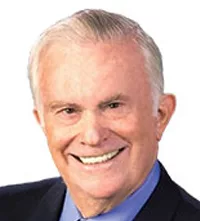In the decades of U.S. presidencies preceding the current White House occupant, a preoccupation with long-term climate change and cheap imports to win over the U.S. population’s multi-millions have increasingly shrunk America’s once globally dominant manufacturing sector.
Strangling government regulations, such as those from the Environmental Protection Agency, added to the rapid downgrade of American factories and the millions of employees, whose jobs were rapidly extinguished. It caused a prolonged period of manufacturers’ under-investment and a reduction of employees, especially in the metals and energy industries.
A stark example of this political attack on domestic production and conversion was presidential candidate Hillary Clinton, who swore to shut down all coal mines if elected. This possibility instigated a major move by China’s economic growth managers to not only expand America-bound exports but to add to their financial benefits with outlandish tariffs.
With prices of copper, nickel and aluminum due to soar as much as 40 percent above 2018 levels, according to experts, if “Buy American” becomes a fact, such a surge would bring with it renewed interest by investors likely returning to raw metal production. This is down to about $40 billion annually for a third straight year, or about one-third of the amount ($120 billion) in expanding production just over five years ago.
Many potential basic metal investors are preparing for such an eventuality, according to Wood MacKenzie, a consultancy focusing on future demand and much higher costs. Professional analysts believe that an inevitable tightening of imports and projected demand in such expansion as solar power and electric cars would greatly enhance the need for basic metals.
Several analysts compare this state of affairs to the once lack of investment in oil, especially after the reality of fracking became vogue, to what will likely happen to the future of base metals. Like the production of oil and its derivatives, targeted by the current administration to force the shift to “Made in America,” such could be the case with home-grown metals.
Inflation on the Comeback Trail
As this is written late in 2018, the bets are that inflation is on the comeback trail. Although the U.S. Labor Department reported that consumer prices were unchanged in November 2018 from October at 2.2 percent above the year-earlier level, core prices, which exclude food and energy, rose only 0.2 percent in October and were up only 2.2 percent for the year.
It was in keeping with the price gains over much of the year. It was also consistent with the more than 2 percent increase for most of the year. This is the main factor that the Federal Reserve Board is observing. It is slightly increasing the price of the Fed funds rate as it reviews the quarterly economic activity as 2019 enters its early stages.
While the Fed does not necessarily follow the economy-at-large and the subsequent actions of the financial markets, especially stocks and bonds, it considers these factors as its quarterly moves are sharply observed for impact on upcoming economic activity.
There is, however, no question that core inflation is bound to head higher in 2019, with the unemployment rate hitting 3.7 percent near 2018’s end and likely heading lower, according to economists at J.P. Morgan Chase. This is, unquestionably, bound to continue for services, especially those that can’t be matched by imports. Meanwhile, tariffs will likely push import prices higher, no matter how successful the ultimate trade tariff agreements turn out.
One important offset is the dollar’s strength, which could help alleviate import price gains. The recent drop in oil prices will cool headline inflation and help reduce core inflation pressures through lower transportation costs. However, J.P. Morgan’s economists expect that the Fed’s preferred measure of core inflation could be increasing at a 2.4 percent annual rate by the second quarter of 2019. That could very well be the upper edge of the Central Bank’s comfort zone, making it harder to hold off any rate increases.
In attempting to view the foreseeable future, President Donald Trump’s re-conversion of manufacturing and technological Silicon Valley-type aspects of expanding activity will put an ever-greater impact on skilled labor, which is already sadly lacking due to its rapid reduction since the beginning of the current century.
Although the “runaway inflation” that reached its peak in the late 1960s and 1970s is not in the cards, President Trump’s promised development of badly needed infrastructure plans and a reborn manufacturing/development economy will almost assuredly bring some inflation, at least, later this year.
Congressional Inaction
While a highly improved year of economic progress was accomplished in 2018, its continued momentum will be heavily dependent on President Donald Trump continuing to strengthen America’s manufacturing/technology sector while dealing with a Democratic House majority willing to block his initiatives to achieve a better chance of regaining the White House in 2020.
In this, the Democratic party will be led by Sen. Bernie Sanders, who surprisingly is leading Democrat presidential candidates in early professional polls. He will be sure to hammer home the higher prices of industrial and high-technology products produced in the United States.
To be politically realistic, the Democrats will hamper the passage of any future initiatives, whether logical or beneficial to President Trump; these will most likely be voted down in the House.
While this may sound one-sided in its interpretation, such major institutions of national infrastructure have not been upgraded in the United States since the Eisenhower years of the 1950s. They stand no chance of passage, despite the urgent needs of 55,000 new bridges, highways, railroad tracks, rebuilt dams, etc., which have been ignored for the past 40 years by those in high office.





